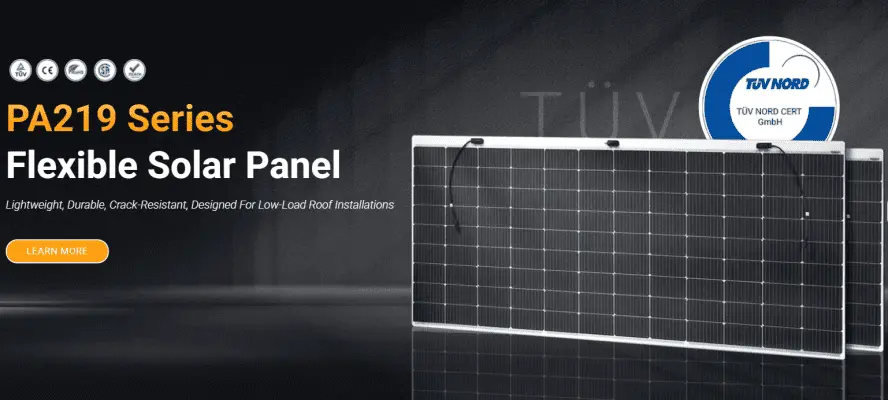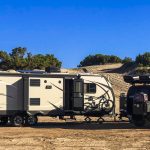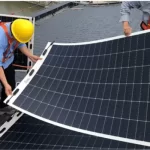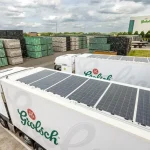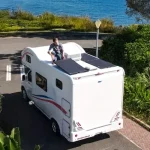As renewable energy continues to grow in popularity, more households and businesses are considering solar power as a way to meet their energy needs. One common question is: Can a 200-Watt solar panel power a refrigerator? This article delves into the logic of matching solar systems with refrigerator power consumption, offering data calculations and case studies to provide you with scientifically-backed solutions.
What Are Solar Panels and How Do They Work?
How Do Solar Panels Generate Power?
Solar panels use the photovoltaic effect to convert sunlight into direct current (DC) electricity. The nominal power of a 200W panel refers to the maximum output under standard test conditions (STC), which are:
- Light intensity: 1000W/m²
- Panel temperature: 25°C
- Air mass: AM1.5
However, actual power output is often lower due to environmental factors such as the angle of sunlight, cloud cover, and temperature.
How Does a 200-Watt Solar Panel Work? A 200-watt solar panel produces 200 watts of power per hour under optimal conditions—direct sunlight with no shading, usually around noon on a clear day. However, real-world conditions often vary, and factors like weather, geographic location, and the angle of installation can affect the actual output.
Why Does Actual Output Differ from Theoretical Values?
Theoretical values often assume ideal conditions, but in reality, solar power generation can be reduced by 20% to 30% due to:
- Changes in sunlight angle
- Cloud cover
- Temperature increases (efficiency typically drops by about 0.5% for each degree Celsius rise in temperature)
- Wiring losses
Therefore, when designing a solar system, it’s crucial to account for these variables to ensure a stable and reliable setup.
What Are the Power Requirements of a Refrigerator?
How Much Power Does a Refrigerator Use?
Refrigerator power consumption varies by type and size. Below is a comparison of the daily energy consumption for different refrigerator types:
| Refrigerator Type | Daily Energy Consumption (kWh) | Running Power (W) | Startup Power (W) |
|---|---|---|---|
| Traditional Compressor Fridge | 1.2-2.5 | 100-200 | 800-1200 |
| DC Inverter Fridge | 0.5-1.2 | 50-100 | 300-500 |
| Absorption Fridge | 1.8-3.0 | 150-250 | No startup surge |
For most homes, DC inverter refrigerators are more energy-efficient, with lower running and startup power requirements. Notably, startup power (the surge when the compressor starts) can be 5 to 8 times higher than the running power.
What Are the Key Parameters to Consider?
- Startup Power: This is the instantaneous power needed when the compressor starts. It’s much higher than the running power, and must be accounted for in system design.
- Duty Cycle: This refers to the proportion of time the refrigerator is actually running. Typically, refrigerators operate for 30% to 50% of the time during a 24-hour period.
- Energy Efficiency: ENERGY STAR-certified refrigerators consume 15%-20% less energy than conventional models.
How Do You Match Solar Output to Refrigerator Power Needs?
How Do You Calculate Solar Panel Output?
To match solar panel output with refrigerator needs, the daily power generation of the solar panel must be calculated. You can use the following formula:
Daily Output (kWh)=Panel Wattage (W)×Peak Sun Hours (hours)×System Efficiency
For instance, a 200-Watt solar panel that gets 4 hours of effective sunlight per day and operates at 75% efficiency will generate:
200W×4hours×75%=600Wh(0.6kWh)/day
How Do You Design the Energy Storage System?
To ensure that the solar panel can reliably power the refrigerator, especially when sunlight is unavailable, an energy storage system (batteries) is necessary. To calculate battery capacity:
Assume the refrigerator consumes 1.5kWh per day, and you want to store enough energy for 2 days of backup. The required battery capacity would be:
Battery Capacity=12V3kWh×2=500Ah
Additionally, selecting the right inverter is essential:
- The continuous power rating should exceed the refrigerator’s running power by a factor of 1.2.
- The peak power rating should exceed the startup power by a factor of 1.5.
It’s recommended to use a pure sine wave inverter to ensure optimal system efficiency.
How Can We Test the Feasibility of This System?
Scenario Setup
-
- Solar System: 200W solar panel + 400Ah battery bank + 1000W inverter
- Refrigerator: 150W running power, 900W startup power
- Sunlight: 4 hours of effective sunlight per day
Power Balance Analysis
| Item | Value |
|---|---|
| Daily Solar Output | 600Wh |
| Daily Refrigerator Consumption | 150W × 8h = 1200Wh |
| Power Shortage | 600Wh |
Solution:
- Increase battery capacity to 800Ah
- Add a second 200-Watt solar panel in parallel
- Switch to a DC inverter refrigerator (which would reduce daily consumption to 800Wh)
By optimizing the system, the solar panels and battery storage can sufficiently meet the refrigerator’s power demands.
What Are the Key Components of the Solar Refrigerator System?
How Do Different Types of Batteries Compare?
| Type | Cycle Life | Depth of Discharge | Price ($/kWh) |
|---|---|---|---|
| Lead-Acid Battery | 500 cycles | 50% | 150 |
| Lithium Iron Phosphate Battery | 3000 cycles | 80% | 500 |
| Gel Battery | 800 cycles | 60% | 250 |
What Other Equipment Is Necessary?
- MPPT Controller: Offers 15%-30% higher efficiency compared to PWM controllers.
- DC Circuit Breakers
- Solar Monitoring Instruments
- Anti-Backflow Diodes
How Do Environmental Factors Affect the System?
What Seasonal Adjustments Should You Make?
| Season | Sunlight Change | Recommended Actions |
|---|---|---|
| Summer | +30% | Improve ventilation to prevent overheating |
| Winter | -40% | Adjust panel angle to latitude +15° |
| Rainy Season | -60% | Use a backup generator |
How Should You Adapt to Weather Conditions?
- Extended Cloudy Days: Increase battery capacity by 100Ah for each additional day of cloudy weather.
- Snow Cover: Install panels with a 45° tilt angle to improve snow sliding by up to 70%.
- Dust Impact: Cleaning panels monthly can improve efficiency by 12%-18%.
What Is the Feasibility of a 200W Solar System?
From the analysis above, it is clear that a single 200W solar panel system is only suitable for small DC refrigerators or as a supplementary power source. To reliably power a standard refrigerator, it is recommended to expand the system by adding more solar panels and a larger battery bank. By optimizing the system—such as opting for a DC inverter refrigerator, using MPPT controllers, and selecting lithium batteries—you can ensure efficient operation and provide customers with a reliable solar-powered refrigeration solution.


